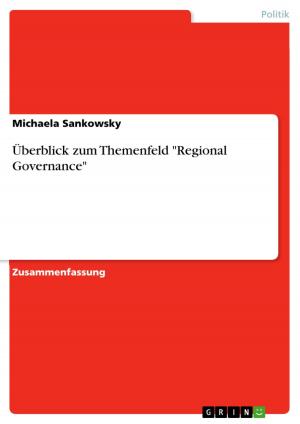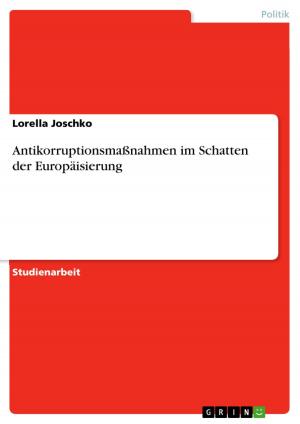| Author: | Vita Bataitis | ISBN: | 9783638420655 |
| Publisher: | GRIN Verlag | Publication: | September 24, 2005 |
| Imprint: | GRIN Verlag | Language: | English |
| Author: | Vita Bataitis |
| ISBN: | 9783638420655 |
| Publisher: | GRIN Verlag |
| Publication: | September 24, 2005 |
| Imprint: | GRIN Verlag |
| Language: | English |
Seminar paper from the year 2004 in the subject Communications - Public Relations, Advertising, Marketing, Social Media, grade: A / 1.0, Emerson College (Integrated Marketing Communications), course: Marketing Management, 8 entries in the bibliography, language: English, abstract: The size of the global wine industry ranged from $130-$180 billion in the beginning of the twenty-first century with an average growth rate of 1-2% per year since 1994. In general this market is very fragmented, because no company has reached more than one per cent of global retail sales in 2001. In order to describe this industry it is necessary to separate between two different wine-markets, the 'New World' and the 'Old World'. The international wine industry has been undergoing a significant restructuring. The 'Old World' producers such as Italy, France, Spain and Germany no longer dominate the global wine industry as they once did. No longer are the 'New World' producers such as Australia, New Zealand, South Africa and USA regarded with disrespect and underestimate. However, there are still great differences between the two worlds regarding consumption, production and innovation. France, Italy and Spain share alone 75 percent of the worldwide wine production and consumption. A significant increase of the 'New World' production could be noticed during the last two decades. According to the World Wine Statistics the wine production has increased considerable especially in the 'New World' countries, from the average of 1997-2000 and 2001, for example, Australia by 34.77%, China by 57.03% and South Africa by 15.78% (for details please see Appendix, Table 1). Furthermore, we can see an expansion of the vineyard acreage in the 'New World' countries. Australia, for instance, has increased its acreage from 1991 to 1999 by 89.23% and the United States by 13.39% (please see Appendix, Table 3). Another significant increase of the wine consumption can be noticed in China with 52.88% in 2001 vs. 1997-2000 (please see Appendix, Table 2). From 2002 to 2003 the Global Wine market has shown a total increase of only 0.2% and has presented 2.45 billion cases. These facts show the enormous growing competition in the wine industry. Especially the 'New World' producers were able to establish strong brands as well as to demonstrate a great wine quality through new technologies and intensive marketing. They are now taking market shares away from the 'Old World', which leads to the decline of the European wine market. In addition, it becomes harder to differentiate and emphasize this product. It is interesting to see how the table wine market is segmented.
Seminar paper from the year 2004 in the subject Communications - Public Relations, Advertising, Marketing, Social Media, grade: A / 1.0, Emerson College (Integrated Marketing Communications), course: Marketing Management, 8 entries in the bibliography, language: English, abstract: The size of the global wine industry ranged from $130-$180 billion in the beginning of the twenty-first century with an average growth rate of 1-2% per year since 1994. In general this market is very fragmented, because no company has reached more than one per cent of global retail sales in 2001. In order to describe this industry it is necessary to separate between two different wine-markets, the 'New World' and the 'Old World'. The international wine industry has been undergoing a significant restructuring. The 'Old World' producers such as Italy, France, Spain and Germany no longer dominate the global wine industry as they once did. No longer are the 'New World' producers such as Australia, New Zealand, South Africa and USA regarded with disrespect and underestimate. However, there are still great differences between the two worlds regarding consumption, production and innovation. France, Italy and Spain share alone 75 percent of the worldwide wine production and consumption. A significant increase of the 'New World' production could be noticed during the last two decades. According to the World Wine Statistics the wine production has increased considerable especially in the 'New World' countries, from the average of 1997-2000 and 2001, for example, Australia by 34.77%, China by 57.03% and South Africa by 15.78% (for details please see Appendix, Table 1). Furthermore, we can see an expansion of the vineyard acreage in the 'New World' countries. Australia, for instance, has increased its acreage from 1991 to 1999 by 89.23% and the United States by 13.39% (please see Appendix, Table 3). Another significant increase of the wine consumption can be noticed in China with 52.88% in 2001 vs. 1997-2000 (please see Appendix, Table 2). From 2002 to 2003 the Global Wine market has shown a total increase of only 0.2% and has presented 2.45 billion cases. These facts show the enormous growing competition in the wine industry. Especially the 'New World' producers were able to establish strong brands as well as to demonstrate a great wine quality through new technologies and intensive marketing. They are now taking market shares away from the 'Old World', which leads to the decline of the European wine market. In addition, it becomes harder to differentiate and emphasize this product. It is interesting to see how the table wine market is segmented.















